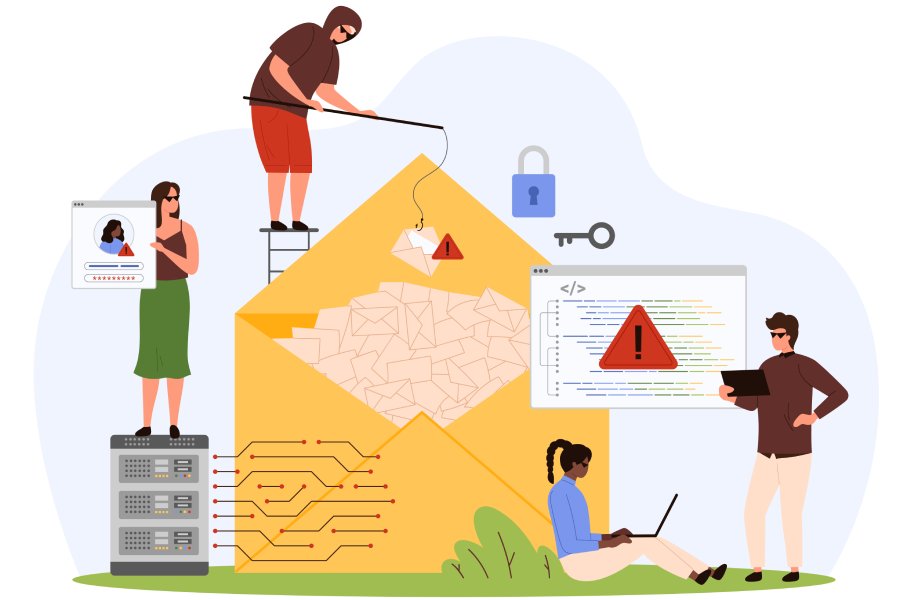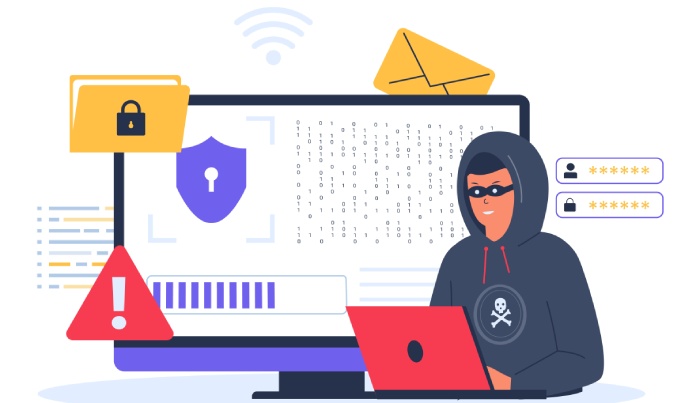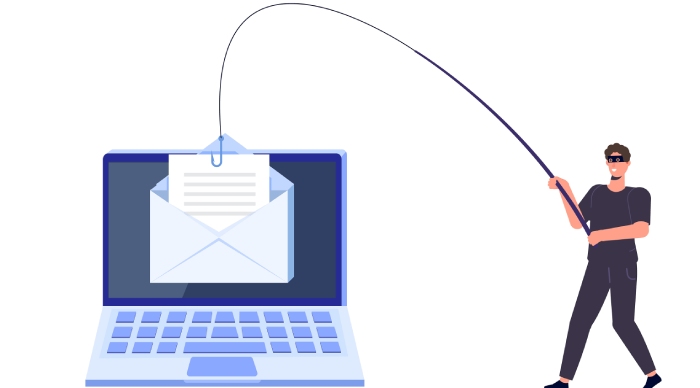Phishing attacks are endless, escalating in numbers, frequency, and intensity with phishers launching hundreds of thousands of attacks every day. You may be wondering why authorities can’t keep check of this nefarious activity. Well, what makes it so challenging to prevent these attacks is the fact that the attackers are tech-savvy people who are professionals in what they do, and they keep on improving their techniques and modus operandi. However, one can adopt anti-spam measures and phishing protection strategies to protect oneself to a great extent, if not entirely, from these cyber threats.
Why Do You Need Phishing Protection?
Phishing is a malicious technique of extracting sensitive personal information such as credit card details, login credentials, or security codes of users by sending them fraudulent emails. In these fake emails, the phishers impersonate real persons or companies and even use logos precisely like the original ones. Successful imitations make inobservant and unsuspecting users bite the bait and give out their credentials. The attackers then use these details to carry out malicious activities. Such attacks are not only carried out through emails. You are continuously under threat from phishers and hackers using other vectors like voice calls, SMS, VOIP phishing, etc.
Phishing protection carries great importance for entrepreneurs and CEOs/CIOs as they are in charge of the data security of their organizations and employees. You should always remember that a successful phishing attack can severely affect or even cripple your business.
How Does Phishing Work?
Derived from the word ‘fishing,’ the cyber threat called ‘phishing’ targets innocent users and aims to steal their confidential data. The inspiration for this name comes from the hook which is used to bait the fishes. The attackers wait for targets to bite the bait and fall prey to their evil game. The ‘ph’ which is used as a prefix symbolizes the language incoherency which is quite common in such emails.
Phishing attacks come in different forms – phishing emails, vishing (voice phishing or VOIP phishing), smishing (SMS phishing), spear phishing, etc.
All these techniques revolve around the primary motive of somehow making the user believe the authenticity of their message. The attackers then make use of the person or company’s details they get from their victims for illegal gains.
These fake emails sent by phishers quickly pass the system’s security checks and are mistaken for genuine ones because they are skillfully framed and highly deceptive. The links attached in such malicious emails take the users to fraudulent websites which are designed to look authentic and credible. It is difficult to tell genuine and phishing websites apart since attackers are skilled at creating identical clones of real sites. For those who think that cloning a website is a lengthy and cumbersome process, the highly skilled cybercriminals can replicate a website within an hour. In such a short time, the attacker can morph authentic sites, such as those of banks.
Thanks to technology, even amateur attackers can swiftly give shape to massive phishing attacks. Phishing kits guide these amateurs through the whole process and enable them to create spam emails that work. For adequate phishing protection for yourself and your employees, you should keep yourself updated with all these tactics of the attackers.
How To Ensure Phishing Protection For Employees
According to PhishMe’s Enterprise Phishing Resiliency and Defense Report, phishing attempts grew by 65 percent. The top-most spoofed brands include Microsoft, Paypal, Facebook, Netflix, and Wells Fargo. One can easily estimate the intensity at which these phishing emails have crept into the lives of individuals, companies, and employees.
Hence, robust phishing protection strategies seem to be the most apparent means of saving oneself and one’s organization from the prying eyes of hackers.
Watch out for phishing emails
The best and simplest phishing protection measure is vigilance. Employees should receive and read emails cautiously. They must watch out for spelling and grammatical errors, which are still a significant indicator of the questionable reputation of the sender. However, as we’ve pointed out above, phishers are intelligent and continually learning and improving, and they’re smart enough to be aware that targets are looking out for spelling or grammatical errors to detect their attacks. So they try to make minimal mistakes while creating fake websites and sending fraudulent emails.
There was only one discrepancy between the real Office 365 page and the phishing page that was discovered recently. The only difference was extra space between “&” and “Cookies” in the “Privacy & Cookies” link in the footer of the phishing email.
When in a dilemma, delete the email
Assuming that employees receive adequate training to handle phishing emails, an employee might sometimes find an email suspicious but can trace no significant details about its origin. Such emails don’t contain substantial contact information about the sender. In such a situation, the employee should try and look for any information about the sender that can be found online. If nothing comes up, it’s better to treat the email as suspicious and delete it instead of keeping it and taking a chance with their system’s security.
Contact the real people/organization who you think has been impersonated by attackers
When an email seems suspicious, it’s wise to immediately contact the actual person or organization whose name and identity has been used by the adversaries (in case it’s a phishing email). Doing this not only protects your organization from exposure to malicious content (macros) but also provides security from all types of phishing attacks.
When you receive a suspicious email from a friend, family member, business, or other trusted source, contact them directly and confirm whether they sent such a mail. Doing this safeguards your system instantly and helps in detecting any ambiguities.
Install antivirus/anti-phishing software
This is an essential thing that you can easily do for efficient phishing protection. Installing antivirus and anti-phishing software will provide a protective wall to prevent extraction of credentials, malware installation on your system, and other malicious deeds of the cybercriminals. But, merely installing antivirus and anti-phishing software serves no purpose if you don’t update them regularly. Hence individuals, employees, and even organizations should incorporate this preventive measure to safeguard their systems.
Accustom yourself with the website’s privacy policy
Reading a website’s privacy policy may sound like a cumbersome task, but it can go a long way in ensuring the safety of your system. Presence of HTTPS in the URL of the website doesn’t necessarily mean that it is an official site. Ensure that the privacy policy of a website is acceptable to you.
In this digital age, where most of the business is conducted online, a single click has the potential to compromise the security of the entire organization. Thus, employees need to undertake phishing protection measures to safeguard themselves and their enterprise. Knowledge has time and again been proven to be reliable along with robust email security service. Specific training needs to be given to every employee against such threats, and they should be encouraged to bring any issue they face to the concerned authority. After all, keeping the cyber-space safe from such phishing attacks is a shared responsibility of all.


